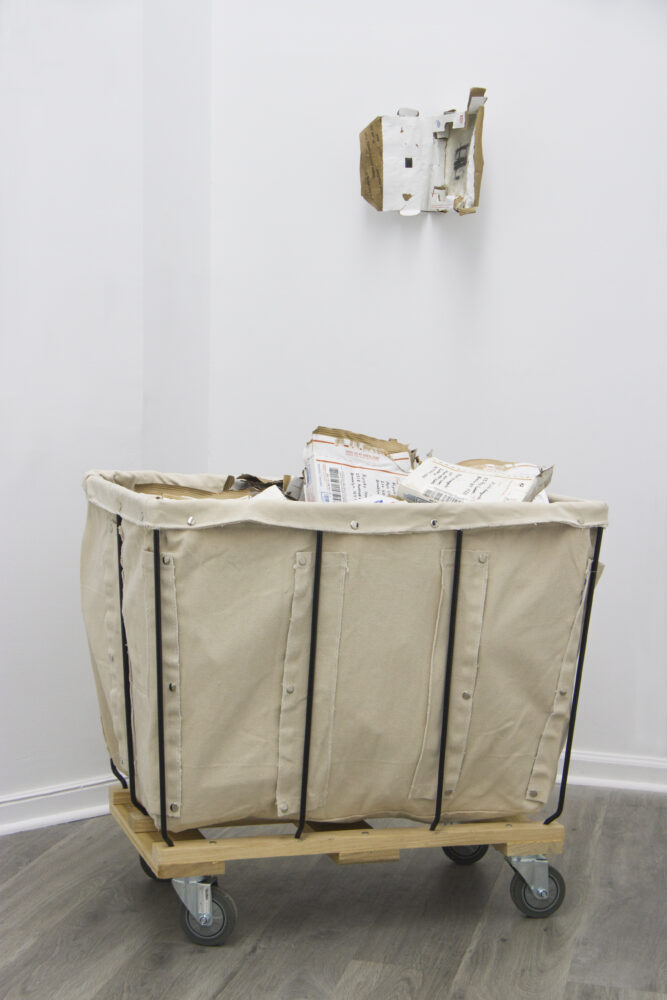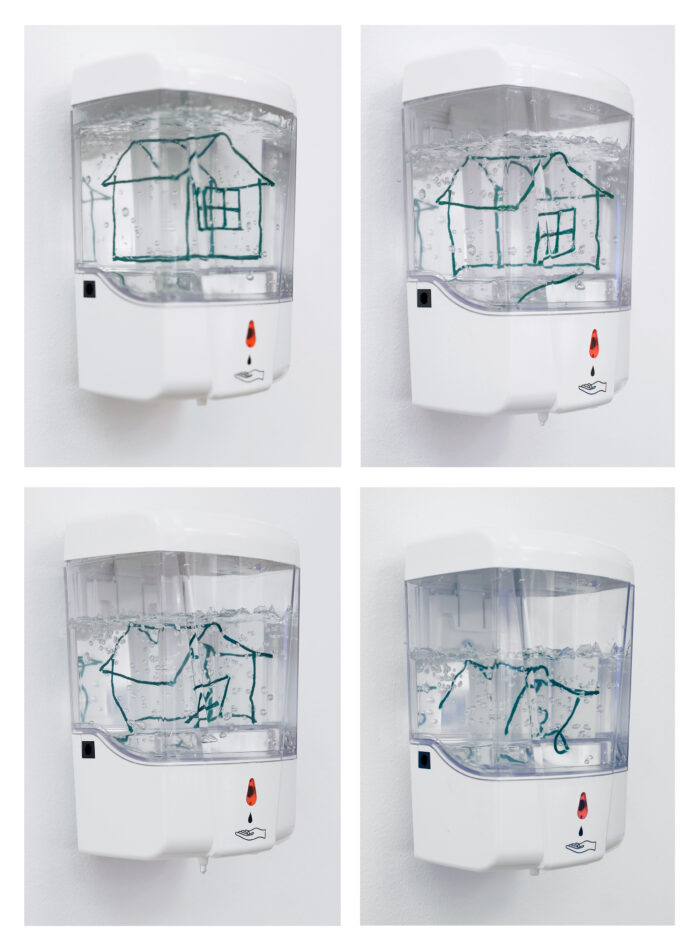
Kyoko Hamaguchi’s debut solo exhibition in New York City, titled “Long Stay”, at the ATM Gallery NYC (running through May 30) is the artist’s intense study of time and place as the apparatus of memory and personhood. The show consists of five bodies of work: End to End (NYC Subway) (2017-2018), Postal Summary (2018-ongoing), Space Watcher (2018-ongoing), Time Medium (2017), and Sanctuary (2020). Each work treats time as a medium. Maximizing photography’s versatility to present complex ideas about time, Hamaguchi patiently illustrates her transient experience as an immigrant and an artist from Japan.
Photography, especially taken from pinhole cameras, respects time as a component of its formation. With the exception of Sanctuary, Hamaguchi uses handmade pinhole cameras to create the other four series. However, Hamaguchi is not just a photographer. As a conceptual artist, Hamaguchi uses photography as merely the medium that would best serve her ideas. For the four projects, the pinhole technology is the vehicle to demonstrate her perspective.

In End to End and Postal Summary, Hamaguchi records her journeys. End to End had been self-imposed journeys. The artist took a long-exposure image each way on all twenty-three subway lines in New York City. To create a diptych for each line’s forward and reverse direction, the artist had forty-six uninterrupted rides from beginning to end. Six sets are present in the exhibition. Postal Summary documents the locations where Hamaguchi had been. Creating pinhole cameras with US Postal mail parcels, the artist sends these boxes from her home to her gallery, or from her gallery to her studio. The photographs are then developed when the box comes back to her, revealing fuzzy interiors of postal offices or abstract shapes formed by light coming through the hole in a particular way.

In both projects, Hamaguchi highlights her presence as well as the impermanence of that presence. The photographs in End to End are atmospheric compressions of these long durations. They become abstractions of the rides and the time spent. Hamaguchi seems to ask: was I really there? Postal Summary suggests an answer. By marking her paths and places through these parcels, where the public addresses are still legible, Hamaguchi stakes her claim on these places–her home, her studio, her presenting galleries, etc. These parcel photographs are like “I was here” markings at historic sites, but they also say “this is my home”. As the postal service only allows one to receive packages where one has a right to be, Hamaguchi subtly claims her right to be at these places, even if it is temporary. With her status as an immigrant, these assertions are not minor declarations.

Unlike the other pinhole projects, Space Watcher is not the resulting photo, but the camera itself. Perched in the corner of Hamaguchi’s exhibitions like a surveillance camera, this series is long exposure photographs of the entire duration of her shows. The artist makes her presence felt through this insertion, unassuming, but invasive, as security cameras are. In a flash, audiences become self-conscious of their movements. A subject under observation is heightened in their awareness, like an immigrant feeling observed by Immigration and Customs Enforcement.
However, unlike real recording cameras, Space Watcher is ineffectual in recording the goings-on in the gallery. One’s presence would only appear on the resulting photograph if one stood very still for a prolonged period. This failure to materialize points to an entirely different goal of the artist. It seems that Hamaguchi aims to literally ensnare the time of her exhibitions with photos that only she gets to see. However flattened, compressed, and collapsed this image may be, the artist has recorded a time capsule, where only small bits and fragments might remain. Speaking to the ephemeral quality of exhibitions, Space Watcher confirms the activity into documentation.

As in Space Watcher, Hamaguchi plays with the idea of conferring existence in Time Medium. The product of each work in this series is a long-exposure photograph and a painting. The photo is an image of the painting process. Using only black, Hamaguchi fills in a drawing of a vase on the painting. The earliest completed portions of the painting are darkest on the photograph as their exposure time is the longest and the lighter portions reflect the fact that they were filled in last on the painting. As the painting progresses, the deletion of the drawing of the vase is reversed in the creation of the photograph. Inspired by the Japanese verb, yaku, meaning “firing” ceramics and “developing” photographs, Hamaguchi cleverly encapsulates both definitions in one work through two processes. It is generally understood that photography is a process that captures images of things that exist. However, in Time Medium, Hamaguchi manages to photograph something that is not there–she used time to fire vases by developing photographs.

With the playfulness of Time Medium, Hamaguchi creates the interactive work, Sanctuary, with colorful thread homes in wall-mounted hand-sanitizers that are filled with seriousness. During the dreaded pandemic year, the artist carefully inserted thread into the sanitizer liquid, she built a home in each dispenser. Reflecting the small confinements of the spick and span NYC apartments, these threadbare homes are submerged in the hand-sanitizer solution. Beyond physicalizing the experience of drowning in one’s home, as they became more and more suffocating over the pandemic year, the artist also points to time as participants use the hand-sanitizer. As one engages with the work, the home starts to deteriorate and collapse slowly. Sanctuary in fact offers no safety, but rather the disintegration of not only the structure itself, but also alludes to the breakdown of the larger social fabric during the pandemic.
Hamaguchi’s work brings awareness to time, place, and one’s own relationship to both. By having her audiences consider the impact of light on photosensitive surfaces in long exposures, time is a ready component that begs the question of what it means to be alive and to experience life, and what choices one makes as they go about their lives? How would the long exposure of my entire life look? Would I like what I see? “Long Stay” is just the artist’s start to, what I hope is, her long and healthy career. This creative individual will continue to find ways to make her presence felt through her thoughtful work.
